Rumors without facts: North Korean missiles for the Russian army
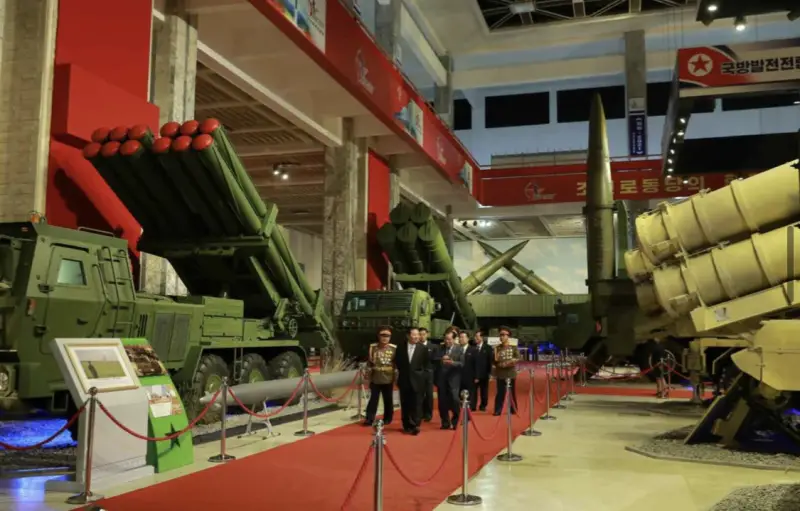
Modern missile systems produced by the DPRK at the exhibition
Unfriendly foreign countries are trying to convict the Russian army of receiving and using foreign weapons. In particular, the possibility of purchasing weapons and ammunition from the DPRK is being actively discussed. Moreover, they are regularly reported as a fait accompli and even some evidence is provided. In recent months, this topic has been raised several times, and the discussion was about the most interesting Korean developments.
Missile contracts
The first rumors about Russia’s purchase of foreign weapons and ammunition began to circulate abroad back in mid-2022. At that time, the foreign press and even officials spread misinformation about the depletion of Russian army reserves and the impossibility of replenishing them independently. From this it was concluded that there was an urgent need to purchase the necessary products abroad.
Only “rogue countries” were mentioned as potential suppliers of ammunition for Russia. In particular, they said that the DPRK could provide shells for artillery and missiles for multiple launch rocket systems. However, such rumors and versions were soon practically forgotten - due to the lack of real events that could be presented as evidence in their favor.
In mid-September 2023, North Korean leader Kim Jong-un arrived in Russia on an official visit. His arrival became the occasion for the resumption of discussions on possible military-technical cooperation between the two countries. At the level of rumors and assessments, certain agreements and supplies of ammunition or even entire weapons systems were again mentioned.
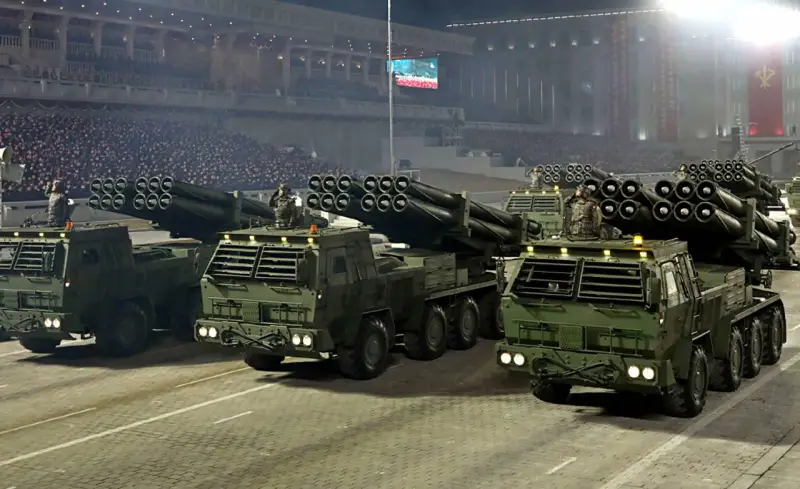
Long range MLRS KN-09
Following the visit of the North Korean leader, British intelligence and the media reported the signing of a secret agreement in the field of military equipment. According to them, Moscow and Pyongyang agreed to deploy joint production of the North Korean KN-09 multiple launch rocket system, which is distinguished by improved tactical and technical characteristics.
However, no details of the allegedly signed agreement were provided. The methods of organizing production, the timing of the appearance of finished products, their technical features, etc. remained unknown. Moreover, all this information is missing to this day - over the past months, Mi-6 or the press have not been able to obtain new details. It is very likely that about the September news simply forgot and moved on to current topics, incl. in the form of regular rumors.
Secret deliveries
However, the topic of Russian-Korean cooperation in the field of ammunition was not completely forgotten. In early November, the South Korean publication The Korea Herald reported the start of deliveries of North Korean missiles to Russia. It received information about this from unnamed sources in the Seoul military department. The sources did not provide any evidence, citing the secrecy of such information.
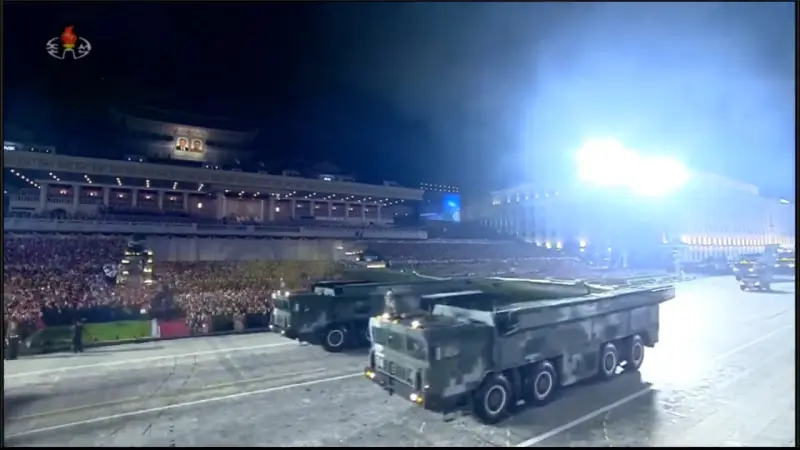
KN-23 complexes on parade
A source for The Korea Herald said that South Korean intelligence is monitoring the possible transportation of missiles and artillery weapons to the DPRK. Transportation by rail, sea and air is tracked. However, recently there have been signs of transfer weapons to Russia.
It is reported that in the area of the port of Rajin on the eastern coast of the DPRK and in other areas of the country, incl. near army installations, reconnaissance recorded increased container shipping activity. In addition, maritime traffic has increased. Previously, one Russian ship per week entered Korean ports, but now this happens every few days.
South Korean intelligence interprets these processes as evidence of intensified military-technical cooperation between the two countries. It is assumed that Russia is purchasing certain ammunition from the DPRK, its own reserves of which are being reduced.
The Korea Herald writes that military cargo goes through the port of Rajin on the east coast of the DPRK. Deliveries began in August, and within a few months approx. 2 thousand standard containers with ammunition. In this way, more than 200 thousand 122 mm caliber rockets for the Grad family systems or more than 1 million 152 mm artillery shells could be transported. It is also expected to supply shots for tank guns of outdated models.
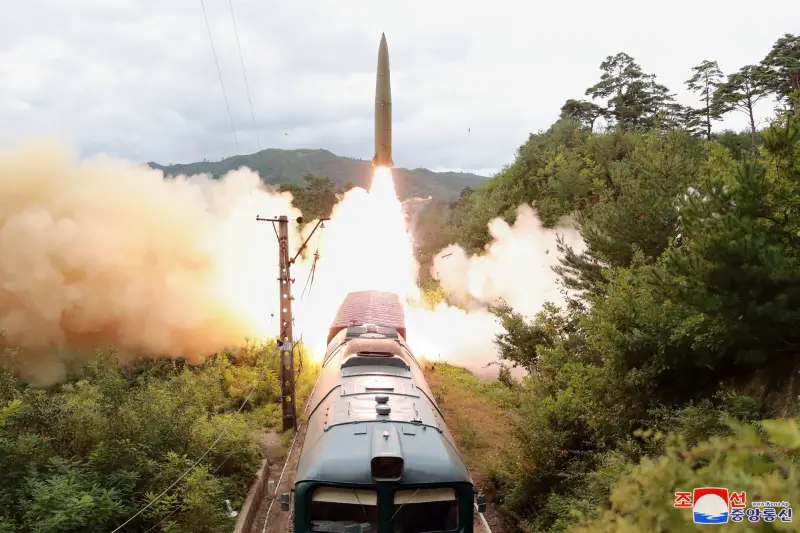
KN-24 missile as part of a railway complex
The Ministry of Defense of the Republic of Korea believes that Pyongyang may transfer other products and ammunition to Russia. Thus, the Russian army can receive operational-tactical missile systems KN-23, KN-24 and KN-25. However, sending missiles of these types may be associated with difficulties. The KN-23 product is believed to have a length of up to 7,5 m, while a standard shipping container can only accommodate 6-meter loads.
As in September, more precise “intelligence data” is not provided. Terms and volumes of deliveries, principles of their organization, etc. The Korea Herald and its sources do not publish. It is quite possible that we are talking about an elementary “stuffing”, and such details were simply not worked out.
Firepower
The main idea of foreign “news” about the supply of North Korean weapons to Russia boils down to the fact that our army is running out of ammunition and it urgently needs to replenish its arsenals. At the same time, the Russian military is forced to turn to “rogue countries” such as Iran or North Korea. It is curious that in this context a variety of ammunition is mentioned, from the simplest artillery and rocket shells to missile systems with high tactical and technical characteristics.
For example, recent reports in the South Korean press list several modern tactical missile systems produced by the DPRK, which, due to their parameters and capabilities, can be of great interest to different armies of the world. Due to the characteristics of these products, attempts to present their proposed purchase as a necessary measure seem strange.
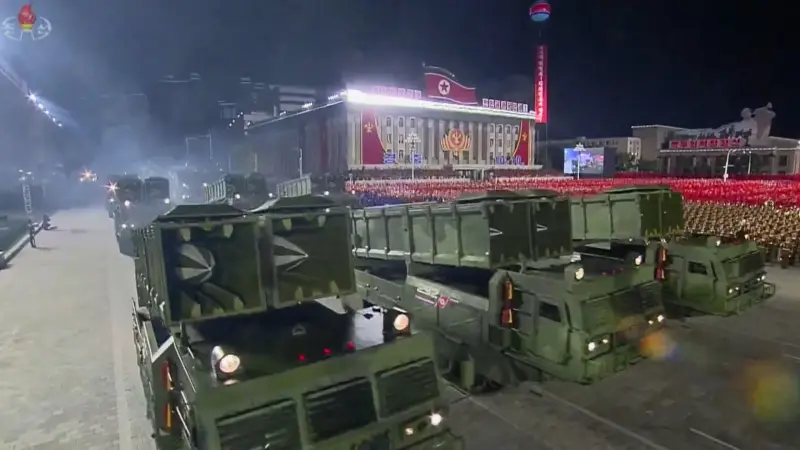
Self-propelled OTRK KN-24
In September, foreign media reported on the supply or licensed production of KN-09 products. This is an MLRS on a wheeled chassis, using 300 mm caliber rockets. Early combat vehicles of this type carried 8 guides, and the modernized version received 12. The system uses several types of 300-mm missiles up to 7-8 m long and weighing up to 800-900 kg with a warhead up to 70-80 kg. The firing range is estimated at 180-200 km. It is assumed that there will be a correction system that increases the accuracy of fire.
The KN-23 or “Hwasong-11Ga” is a self-propelled tactical missile system on a wheeled chassis or other platform with a solid propellant missile. In its appearance, composition and characteristics, this product is close to the Russian Iskander OTRK and is even considered a kind of copy of it. The KN-23 missile is approx. 8-9 m and weight approx. 3,4-3,5 tons, of which up to 500 kg are warheads. Flight range – 450 or 600 km, depending on modification.
The KN-24 or Hwasong-11Na missile belongs to the same class as the KN-23. At the same time, in appearance and, probably, in design, it is similar to the American ATACMS product. With almost the same size and weight as the Hwasong-11Ga, this missile has a firing range of approx. 400 km.
The KN-25 complex is of the greatest interest from a technical point of view. It is designated as an ultra-large-caliber MLRS, but in fact we are talking about an OTRK with an increased number of missiles on the launcher. The KN-25 combat vehicle carries five or six missiles approx. 8 m and caliber 600 mm with a weight of approx. 3 tons. The launch range reaches 380 km, and due to the correction system, increased accuracy is ensured.
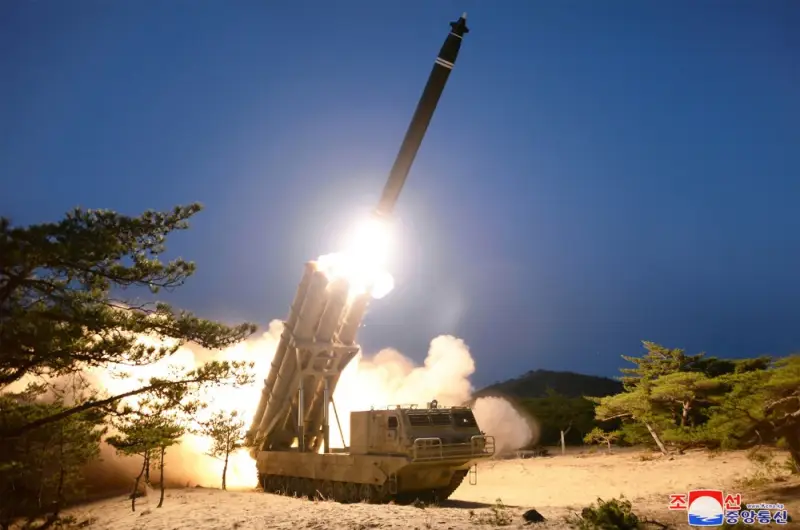
MLRS / OTRK KN-25 with 600 mm rocket
It is easy to notice that the Korean KN-09 missile system is similar in characteristics to the Russian Tornado-S MLRS, but surpasses it in maximum firing range. Other multiple launch rocket systems and operational-tactical complexes mentioned by the foreign press are more or less similar to Russian systems, but do not have noticeable advantages over them.
Judging only by its tactical and technical characteristics, the KN-09 product may be of interest to the Russians. However, in the field of missile weapons, our Ministry of Defense prefers to rely on the developments and products of domestic industry, which sharply reduces the chances of the Korean MLRS entering service. Other MLRS and OTRKs are generally of no interest.
Rumors and facts
Thus, foreign intelligence services and the media are still trying to work out the theme of the depletion of Russian army reserves, the weakness of the defense industry and the need to urgently obtain weapons from abroad. Messages on this topic over and over again do not find confirmation, but this does not prevent one from regularly publishing similar “news.”
It should be noted that now there are indeed problems with stocks of weapons and ammunition, as well as with the supply of necessary products. However, all this applies to the Kyiv regime and its foreign patrons. Together, they have depleted their reserves and are now in an ambiguous position. It is unclear how this situation will be resolved. But it is clear that spreading rumors about the problems of the Russian army is not a suitable solution.
Information